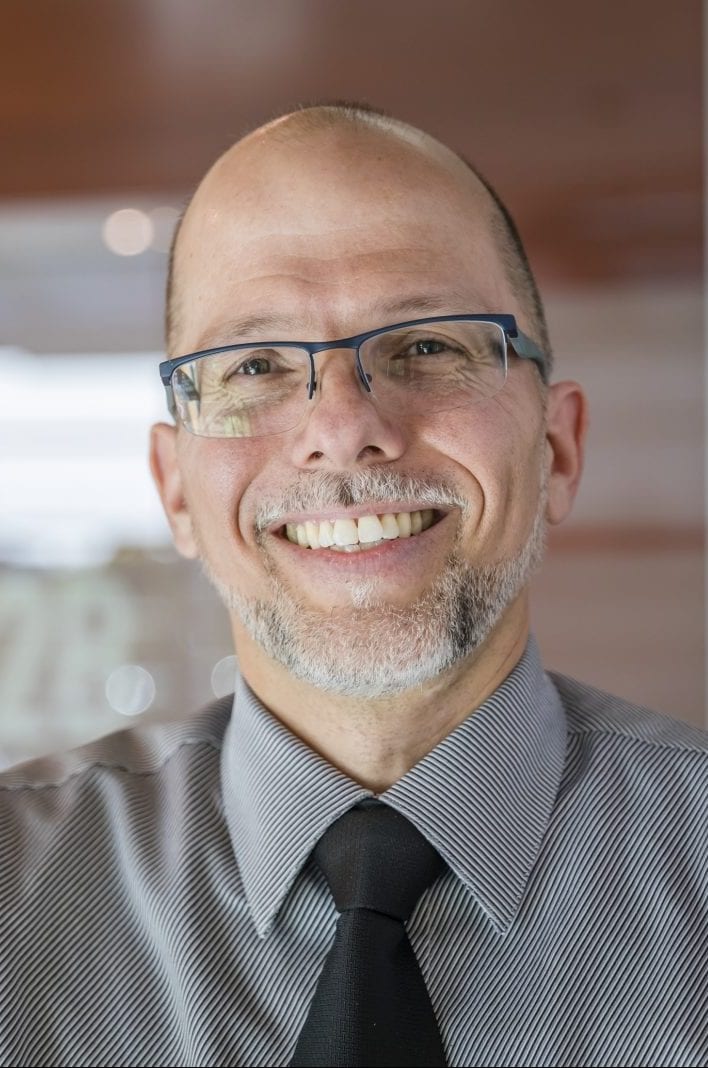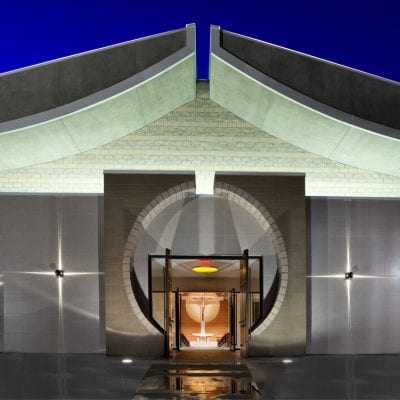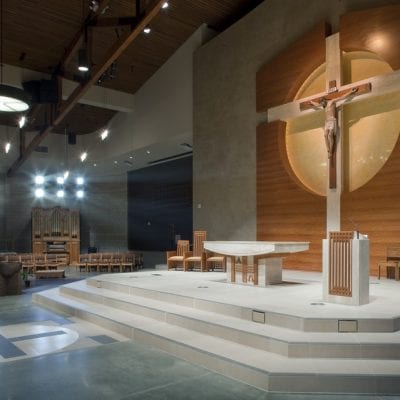Alumni Spotlight: Eric Carbonnier on Sustainable Design & Building a Better World
Alumnus Eric Carbonnier (BArch ’95) is an architect and executive sustainability strategist at HMC Architects. His work is focused on organizing processes, structures, and complex sustainable practices with positive impacts across cultural, environmental, socioeconomic and dimensions. Eric leads the firm’s environmental commitment through policy, strategic planning, and project implementation firm-wide. Nicknamed Dr. Carbon by his students, Eric concurrently lectures at Cal Poly Pomona on environmental design and formerly a Graduate Teaching Fellow at the University of Oregon. We recently caught up with Eric to discuss how architects can build in more sustainable ways and design a better world.
Interview with Eric Carbonnier
 Q: Why did you choose to study architecture?
Q: Why did you choose to study architecture?
Toys were sparse and my building blocks were silverware, plates, pot and pans. Every dinner turned into a Buckminster Fuller meets Ron Herron landscape — it drove my parents crazy. My thirst for creativity then turned to drawing on continuous perforated printer paper and the illustrations would go on forever, but a solid match to my imagination. I distinctly remember drawing for countless hours and driving teachers crazy that I wasn’t paying attention in class. While they were less accepting of my interest, I was intrigued. I frequently traveled to France to visit family and the architectural styles resonated with me long after our stay. My half-brother is also a talented and visionary architect that certainly influenced me from a distance as we never lived together. One chooses to interpret how one comes to be, I made a decision to become an architect and never looked back. However, I propose that architecture chose me long before I knew what architecture was.
Q: You’ve seen Los Angeles evolve and develop. What role do you believe architects play in urban development and sustainability?
Do architects play a role in urban development and sustainability or does culture/society shape these movements? It’s a challenging question because it is my view that the manifestation of our current urban development in Los Angeles is pressed to align with a distinctive movement like those in other cities that parallel intellectual achievements in the arts, science, social awareness, and rise in cultural integration and economies. With 10 million inhabitants in Los Angeles County and another 4 Million in the City of Los Angeles dispersed over 5,000 square miles it’s to no surprise that you may never see a distinct movement and only take part in periodic taste tests of I.M. Pei, Gerhy, and Coop Himmelb(l)au works that have no broader binding movement other than the sculptural gem in a vast forever changing landscape. For Los Angeles may never be more than architectural appendages and in and of itself might unknowingly be the architect’s role.
Q: You’re the Vice President of Sustainability at HMC and have a background in teaching as well. What do you believe is the relationship between academia and practice?
Let’s start with pedagogy. An educator must choose between teaching what is or what will be. There is no right or wrong answer — just conviction. How I teach is more in-line with the “what will be”. To frame this in class it is vital that I focus on the invitation to innovate. To innovate is to distance oneself from the past and incite entrepreneurial thinking because the practice of architecture is in jeopardy of self-extinguishing. We must guide students to think beyond traditional practice methodologies because students may graduate with antiquated skills at the rate of technological advancements in visual programming, digital fabrication and project delivery methods. To prepare future generations and retain educator relevancy, I firmly believe that a pedagogy framed around research methods will drive future process as we become more data driven.
Meanwhile, practice solvency must track external influences that constantly shape and challenge our industry from the tools we use to how and where we work. Can an architecture student graduating in 2025 confidently enter the workplace without a balance of theory, visual programming, data mining, and remote learning? There is profound collaboration between academia and practice and being in both places provides an opportunity to test my pedagogical theory to inform a stronger graduate.
Q: Architects often face questions of narrowing project scopes. With changes in climate, technology, and construction techniques, how do you think architects and designers will adapt ways of practicing to advance the profession?
I believe our scope hasn’t change much but the depth at which we must respond has made it very challenging for small to medium practices to support, but a ripe place for entrepreneurism to emerge. For example, up until 20 years ago, the architect was responsible for developing their energy models and establishing building envelope performance. Today, many architects may not know how to design a high-performance building without consulting with a building scientist, which by the way, is a great profession for a graduating architectural student to consider. The same concept applies to environmental design and carbon neutrality goals. Small to medium size architectural practices are not equipped to respond to these deep dives. Meanwhile, large practices may have building science divisions or research and development capacity that advance the profession. From a practice point-of-view, my strategic positioning is leading HMC Architects as a thought leader in sustainability with opportunities for R&D. From an academic point-of-view, instructional delivery must invite students to think like researchers and challenge more than aesthetic delight.
Q: What projects have you enjoyed working on most?
HMC Architects has provided me many amazing opportunities to collaborate on healthcare facilities, higher education, and civic projects. However, my most memorable design experience was the St Thomas Korean Catholic Church for the Roman Catholic Diocese of Orange. Proposing a Korean cultural identity in California was hands down the most challenging task of my career. Perceptions of aesthetic representation was divided between traditional Korean ways and new emerging 2nd generation Korean-Americans seeking new and unique identity without dishonoring the past. Patience, understanding, and being open minded to the diverse cultural landscape shaped the design and forged lasting relationships.
Q: What advice would you give to students and designers who aspire to follow a similar career path?
Evolve or dissolve — that is my most sincere advice to any graduating architecture student. Heck, this applies to even the most seasoned architect. Stay nimble, grow intellectually but don’t forget the tactile nature of the profession. Learn to build, get dirty, stub a finger or two with a 16-once hammer, and apply the right technology to suit your process — never the other way around. But, keep in your sights digital fabrication as it will forever shape the architecture profession. Future architects can help shape it or get shaped by it.
Q: What three words would you use to describe Woodbury?
Before I answer, a bit of history. My parents immigrated from Europe and they did everything to advance my life and dreams, but at the same time knew very little about the American university system. I hobbled out of high school and was rejected from every architecture school — dreams delayed but not shattered. This did not dissuade me, and I continued at Glendale College, bolstered my grades and went back to the application process a couple years later. I visited Woodbury University and meet Lou Naidorf — I believe he was Dean at the time. I don’t recall the discussion in detail but after our discussion I knew I wanted to be at Woodbury. Woodbury was hope, fulfillment, and opportunity.

